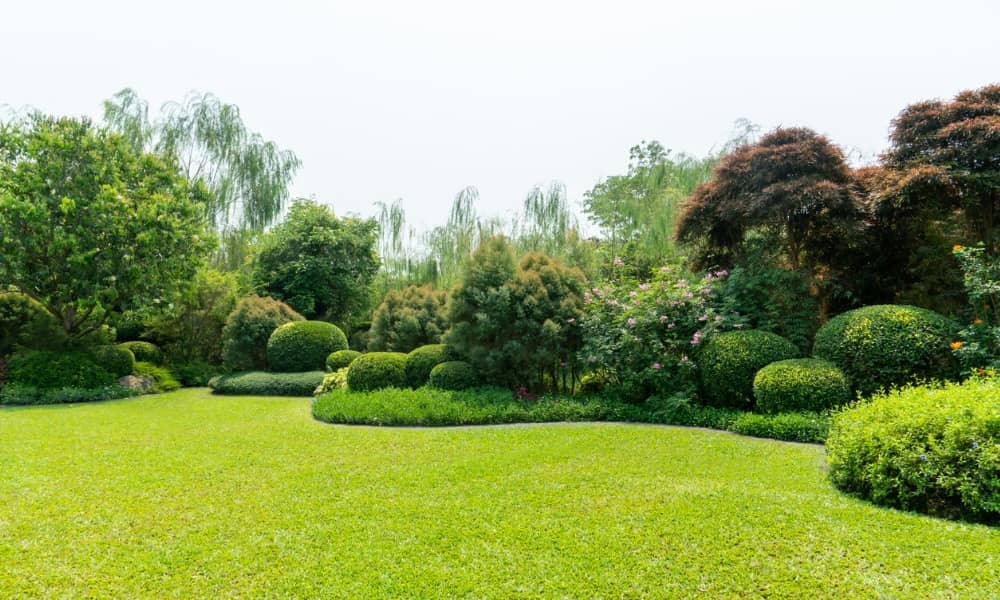Key takeaways:
- Community managers are often responsible for green spaces around the neighborhood
- These spaces can attract pests
- Developing pest control methods that don’t use chemicals is advisable
- Professional assistance is also available
Community managers usually need to take care of green spaces around the neighborhood. If left unkempt, these spaces can quickly become a breeding site for pests. So it’s crucial to maintain a proper landscape maintenance plan.
Do you want to create attractive green spaces in your community? Here are some simple landscaping tips that can help you keep your grass pest-free.
Aerate the Lawn
Many community managers overlook aeration when considering lawncare techniques, but this simple process can bring out the best in your community lawns. You can rent or buy an aeration machine to loosen up the soil, which gives your grass better access to essential nutrients. Proper aeration keeps grass green and healthy, which can make your lawn less attractive to pests since they usually thrive where plants rot or decay.
Remove Standing Water
Standing water provides the perfect breeding ground for mosquitoes, cockroaches, and ants. If your community’s lawns remain damp, you’ll soon have to deal with pest-filled yards. Make sure your lawns drain properly before pests take advantage of standing water. And don’t forget to use the right amount of water for irrigation – too much creates puddles and bogs that are an open invitation for unwanted pests.
Prune Trees & Shrubs
Trees and shrubs help keep the air clean, but pests can use trees to infest your green spaces. Pruning reduces your risk of pest infestations and helps create a pest-free yard. Research the specific trees and shrubs in your green spaces to develop a customized pruning regimen that will keep them healthy and strong.
Mow the Grass
Tall grasses are ideal nesting sites for pests such as termites, fleas, and mosquitoes, providing them protection from predators and shade from the sun. Mowing your grass weekly uncovers pests, meaning they’ll quickly run off to new hiding spots. And community members will enjoy more time in your green spaces, too, if they’re kept neatly trimmed.
Just be sure not to cut the grass too short, which exposes it to the scorching sun. Very short grass can also have difficulty retaining water and nutrients.
Remember to dispose of the grass clippings properly. You don’t want the pests to simply move from the tall grass to the heaps of grass clippings. While removing the clippings, don’t forget to take care of other debris and leaves, as well.
Proper Wood Storage
Does your community store wood in the yard? It won’t be long before you have to deal with pest infestations. Termites, in particular, thrive in poorly stored timber. Proper wood storage, on the other hand, helps keep pests away from your residents’ homes. Consider using racks that keep firewood off of the ground. This not only helps keeps pests away, but also allows airflow underneath, preventing moisture from building up and keeping your firewood dry. Ultimately, your firewood becomes less attractive to lawn-ravaging pests, and ants and termites won’t take up residence in the wood where they could later spread to your community yards.
Proper Garbage Disposal
Pests thrive in litter-filled environments. Encourage residents in your community to remove trash as quickly as possible. This approach ensures that you won’t lure wood-loving pests and termites into your green spaces. Use trash cans with lids to properly dispose of garbage.
Introduce Pest-repelling Plants
Use the power of nature to fight back against pests. Adding plants that resist pests can help you to deal with this menace naturally. Not all plants are attractive to pests. In fact, plants like peppermint, basil, lavender, mint, rosemary, marigolds, and catnip can make pests think twice about infesting your lawn.
Lavender in your backyard will repel mosquitos, moths, and flies, while petunias can keep aphids away from your other flowers. Pest-repelling plants provide a natural way of keeping your lawns pest-free, and they’re fairly inexpensive, too.
Use Fertilizers
Using the right fertilizer can ensure you create a healthy lawn. With a little research, you can find a fertilizer regimen that keeps your grass green and thriving. Your local gardening center or plant nursery should be able to point you to the right fertilizers to use for your lawn type and environment.
Proper fertilization allows you to create lush, vibrant lawns resistant to pests and diseases. Organic liquid fertilizers are a great option to consider. Such fertilizers expose your yards to the proper nutrient amounts at frequent intervals. This approach ensures that you nourish your lawns more sustainably. You could even connect automatic injection systems that administer small fertilizer doses at regular intervals if you have an irrigation system.
Yard Maintenance
In addition to helping you avoid pest infestations, a well-maintained lawn provides a cleaner and healthier environment for your community. Keep dirt and pest attractors away from the yard; create streamlined gardening policies that ensure you maintain your lawn proactively; and look out for animal wastes or decomposing plants that attract flies, rodents, and ants.
Embracing HOA property maintenance might seem simple, but it will yield great results. Basic practices like mowing the grass will keep rodents away, reducing the risk of disease spread in your neighborhoods. Consider hiring professional landscapers who will keep your lawns in perfect condition. Don’t wait until it’s too late to keep pests away.
Partner with Certified Vendors
Embracing these landscaping practices is ideal for creating safer, healthier, cleaner lawns. And a pest control specialist can also help keep your lawn and property pest-free. VendorSmart can connect you with experienced vendors who can do the work for you. We’ll simplify how you manage vendor compliance and source vendors for different projects.
Want to learn more? Contact us today to learn how to use our platform and connect with top-rated vendors.
